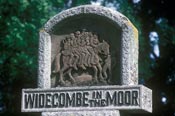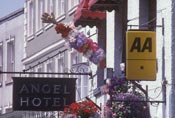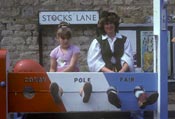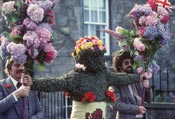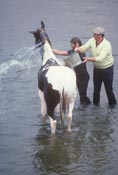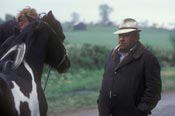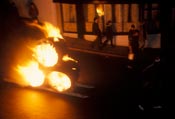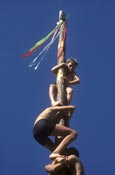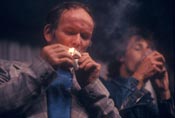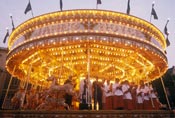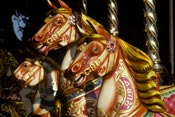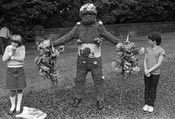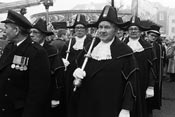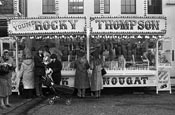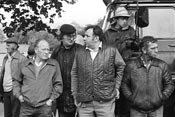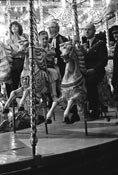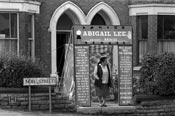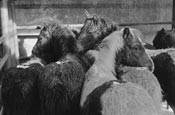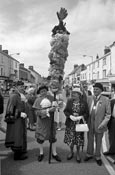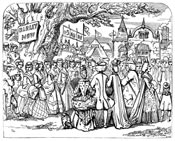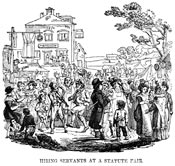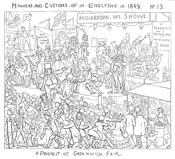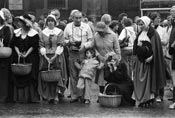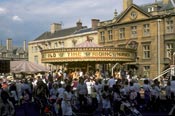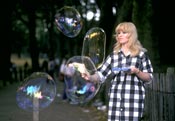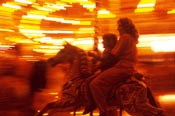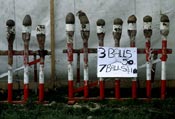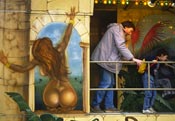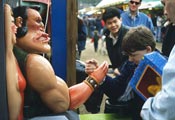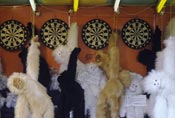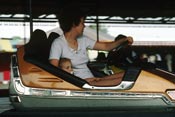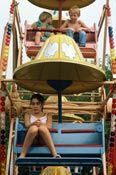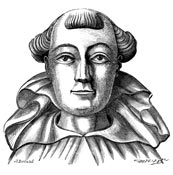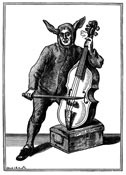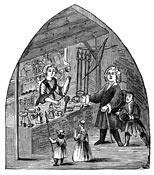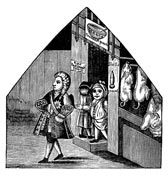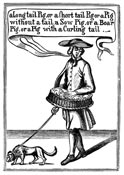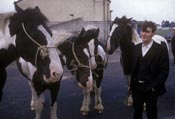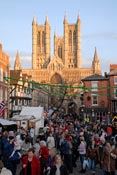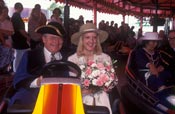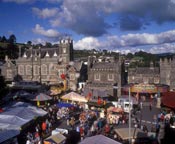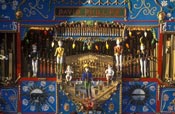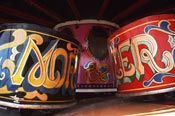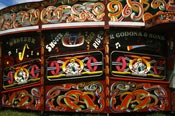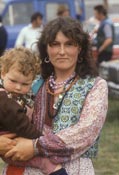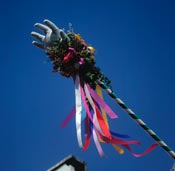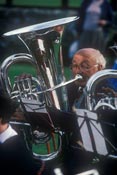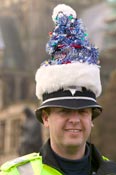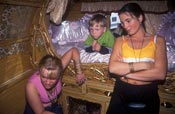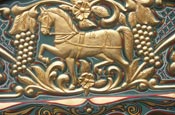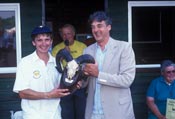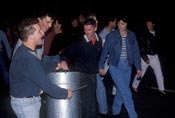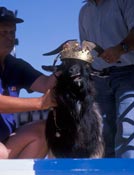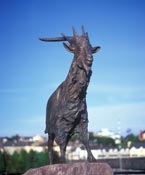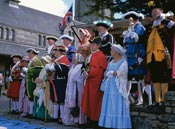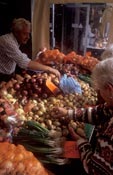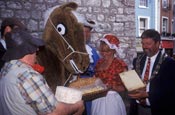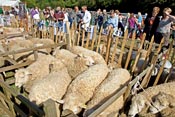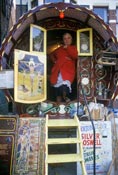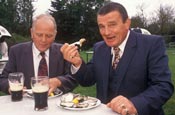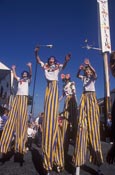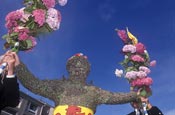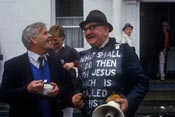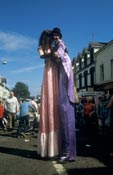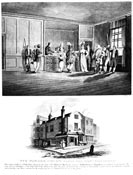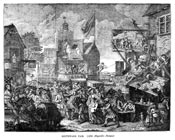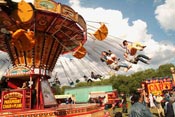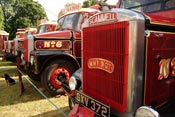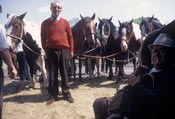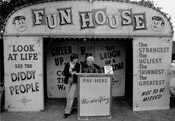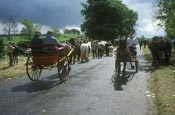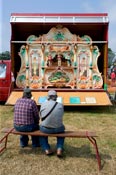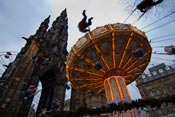
All the fun of the Fair! This selection of pictures is intended to symbolise the kaleidoscopic nature of fairs. There is always something interesting going on; noise, horse trading, the rides, eating, watching, fortune telling, blowing bubbles, gurning, games...
In ancient times, with no formal shops or markets food and cloth was provided by unpredictable travelling merchants. Eventually the system grew into Fairs, on special days, in specific places, with not only merchants selling their wares but also vendors with fodder for hungry and thirsty visitors, and performers to keep them entertained. Drunkenness and debauchery soon set in of course, not to mention dishonesty and fighting, so that by around 1200 licensing systems had to be introduced, and the Charter Fairs were born. Between 1200 and 1400 over 5000 charters to hold annual fairs were granted, many of which are still valid today, such as at Nottingham Goose Fair. However most of the fairs died out, for the reasons above, or because they had outlived their usefulness. Trade went into shops, markets and exhibition halls; if anything was going to survive, in a folk custom sort of way, it was the fun part in the form of the Pleasure Fairs we know today. Stourbridge Fair, on land on the NE edge of Cambridge, granted a charter by King John in 1199, had grown to being the largest in Europe by the end of the 16th century and the official two days had extended to nearly a month. It was so big the stalls were set out in streets, with names such as Mercers Row, Garlic Row, Oyster Row, that survive to this day in the city. However it dwindled gradually over the next three centuries; in 1933 Stourbridge Fair was proclaimed by the Mayor ‘in the presence of a couple of women with babies in their arms and an ice-cream barrow’ since when it has disappeared altogether.
Bartholomew Fair was the big one in London, suppressed in 1855 because it simply got out of hand, the fate that also befell other London fairs such as Greenwich, Southwark, Camberwell and Mitcham. Pinner and Barnet are still going on. The closing of these fairs was partly responsible for the success of Hampstead Fair. Londoners needed their fun so ‘Happy Hampstead’ has been flourishing on Hampstead Heath on Easter, Spring (Whit) and August Bank Holiday weekends since the mid-nineteenth century. It is less popular than it was, though, with London’s much changed population and proliferating alternative attractions.
If London’s Pleasure Fairs remain in the hands of a few families, all the rest are a matter between local authorities and the Showmen’s Guild of Great Britain. If you have the impression ‘see one fair and you have seen them all’ that is because the same fairground families travel around to arrive at the same time each year at locations around the British Isles, each one with rides, stalls, games, juvenile shows and fortune tellers according to the size of the site and the number of punters that can be reasonably expected to part with their money. The first of the season is King’s Lynn Mart on St Valentine’s Day, the last at Loughborough in November. They all come together for the biggest gatherings of all, ‘The Hoppings’ on Newcastle Town Moor in June, the biggest pleasure fair in Europe, and Nottingham Goose Fair, one of the most venerable, at the beginning of October.
Nottingham’s geese have long gone but several fairs retain their livestock element. Tavistock trades geese for old times’ sake at their ‘Goosey Fair’ but at some the livestock is the thing, the pleasure of secondary importance. Priddy is for sheep. There are several horse fairs where gypsies show off their goods in alarming displays of bareback riding and piebald horses change hands for astonishing sums of folding money. Appleby is the most famous, but there are others at Stow-on-the-Wold, Brigg, Barnet (where London cabbies used to buy their horses), Ballyclare in Ulster, Smithfield in Dublin, and a really big one in the middle of Ireland at Ballinasloe.
Some fairs are notable for unique features. Widecombe has Uncle Tom Cobley and his grey mare; Ebernoe has a cricket match; Queensferry has the Burryman; Egremont’s ‘Gurning’ contest is world famous; Puck Fair in Co Kerry crowns a goat; Holdsworthy presents their ‘Pretty Maid’; ‘The Glove is Up!’ still in Honiton, Exeter and Barnstaple during the duration of their fairs.
Roll up! Roll up!
